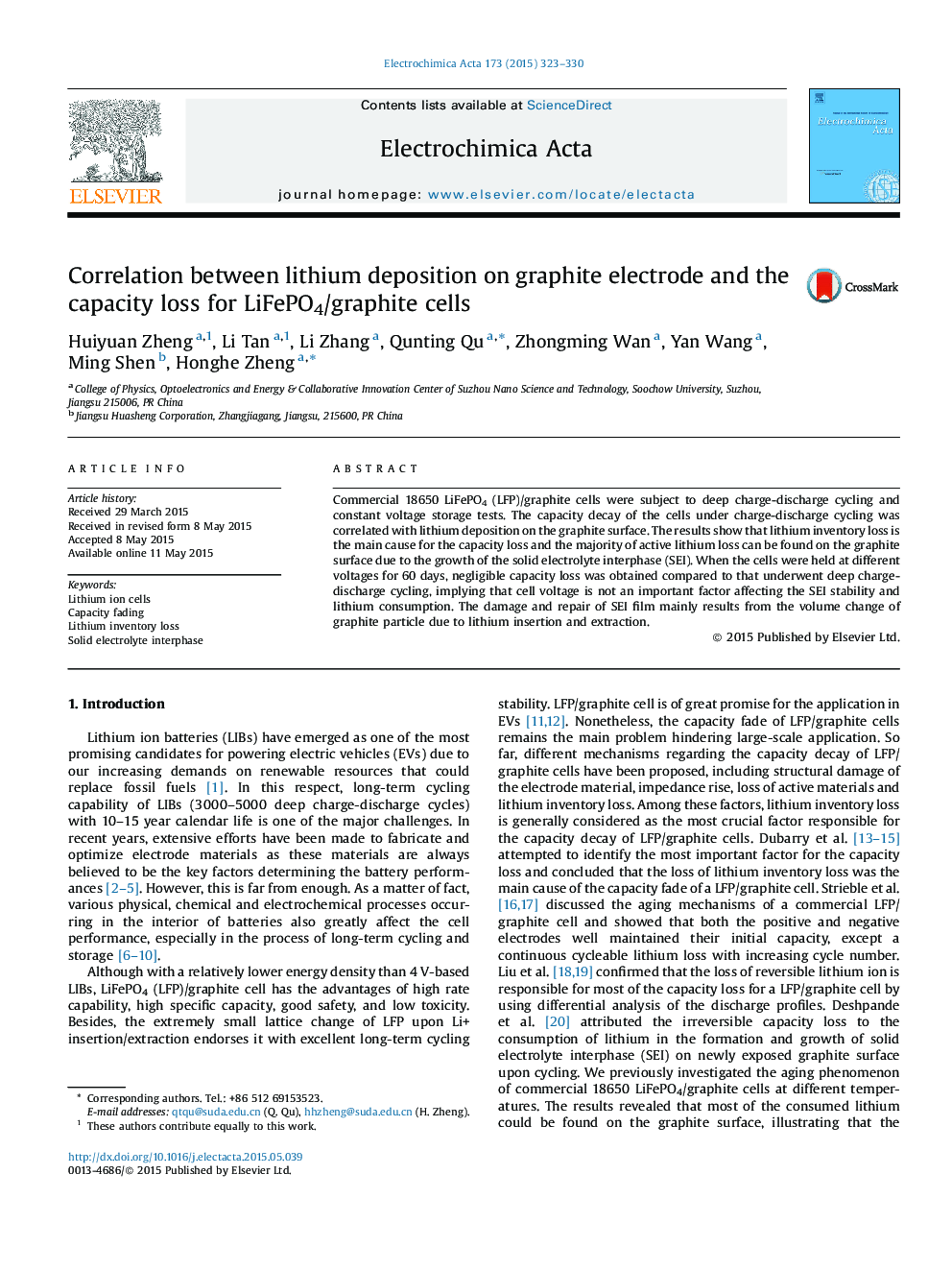| Article ID | Journal | Published Year | Pages | File Type |
|---|---|---|---|---|
| 183791 | Electrochimica Acta | 2015 | 8 Pages |
•Lithium deposition on graphite electrode was quantitatively correlated with the capacity loss for a LiFePO4/ graphite cell•The growth of solid electrolyte interphase (SEI) is confirmed to be the most important cause for capacity decay.•Cell voltage doesn’t considerably affect the stability of solid electrolyte interphase (SEI) on the graphite surface.•Volume change of graphite particles is the important factor responsible for the damage and rearrangement of SEI film.
Commercial 18650 LiFePO4 (LFP)/graphite cells were subject to deep charge-discharge cycling and constant voltage storage tests. The capacity decay of the cells under charge-discharge cycling was correlated with lithium deposition on the graphite surface. The results show that lithium inventory loss is the main cause for the capacity loss and the majority of active lithium loss can be found on the graphite surface due to the growth of the solid electrolyte interphase (SEI). When the cells were held at different voltages for 60 days, negligible capacity loss was obtained compared to that underwent deep charge-discharge cycling, implying that cell voltage is not an important factor affecting the SEI stability and lithium consumption. The damage and repair of SEI film mainly results from the volume change of graphite particle due to lithium insertion and extraction.
